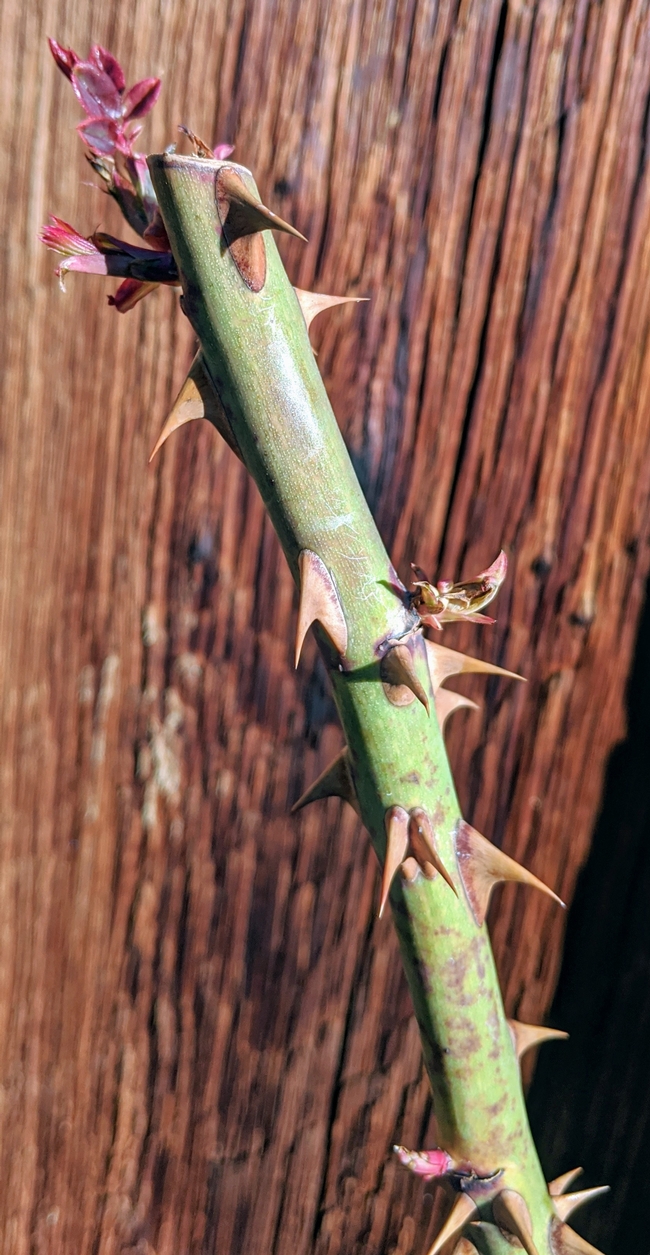
What caught my eye, however, was how the buds began to grow in response to the pruning. I thought it was a good illustration on how plants respond to cuts.
As you can see from the picture the buds near the cuts were immediately released from their winter quiescence. As you move down the stem the buds are growing, but were less affected.
This is typical when pruning. You can use this feature of plant growth to direct where the new growth with go on roses and other plants. Simply choose a bud facing outwards (or whatever direction you want), prune right above that, and new growth will commence right below the cut.
You may have noticed that many trees in our area that have been topped back send up many, many new branches to replace the missing branch. This is an example of the same process. In trees, it is usually an undesirable outcome that causes more problems than it solves; however, in roses, it can be a useful tool to manage growth.
If all goes well, this stem should send up a new stem facing outward that will be vigorous and healthy. If I remember to water it, that is!
If pruning interests you or you would like to learn more about how heading cuts affect plants, this article from Harvard has a nice overview.